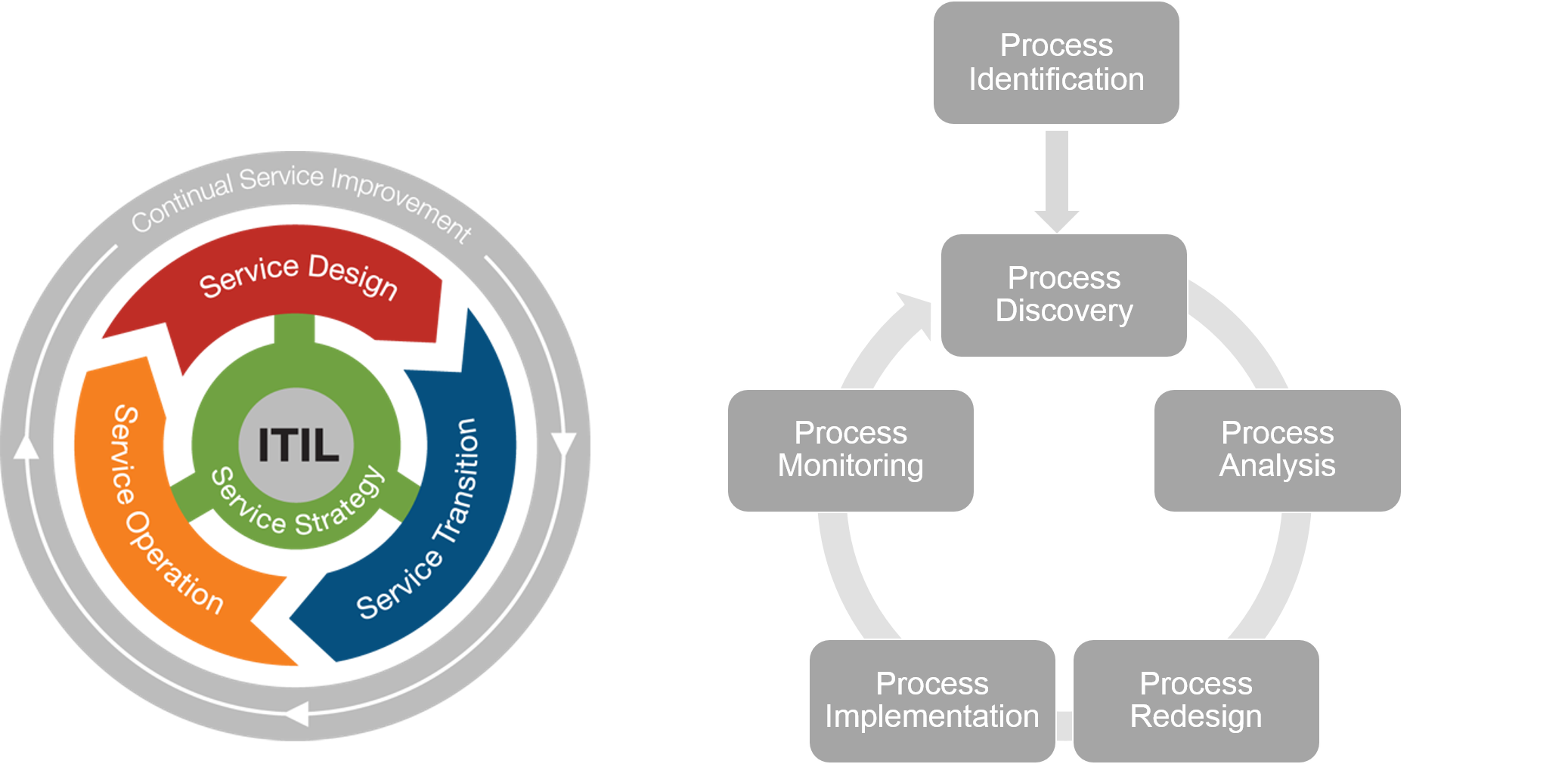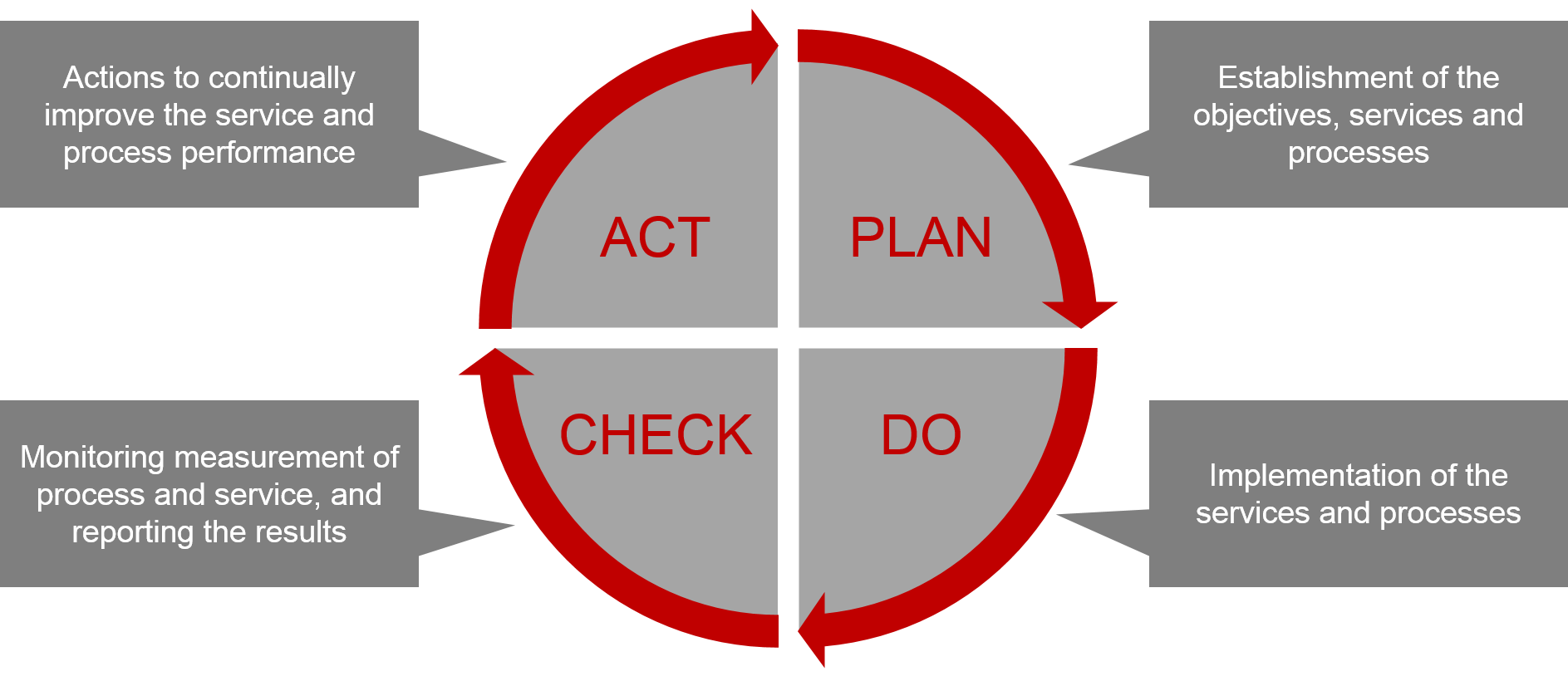The Creation of a Service Portfolio
During the Service Strategy in ITIL, before starting with the redaction of a Service Portfolio it is important to obtain a wider overview of the Company Services that are recognized by the Business independently on their state of implementation:
- No longer offered: where do we come from?
- Currently active and offered: who are we?
- In Pipeline: where do we want to go?
This historical recognition will certainly help the redaction of a much more precise and synchronic Service Catalogue, tailored to the real Company soul.
BPM for a Continual Improvement
One of the common approach that can be used for the Service Portfolio entries identification can be learnt from the fundamental principles of the Business Process Management (BPM).
It’s possible to identify six phases in the BPM lifecycle:
- Process Identification: we identify business processes that are strategically important and most in need of being improved.
- Process Discovery: we use business process models to capture these processes
- Process Analysis: we analyse the business processes in order to identify weaknesses
- Process Redesign: we evaluate different process changes to fix these issues
- Process Implementation: we implement changes (for example, by means of process automation).
- Process Monitoring and Controlling: we monitor the execution of a business process to make sure it meets performance targets
BPM & ITIL
If we try to create an analogy between ITIL and BPM we can define that the Process Identification and Discovery phase can be linked to the Service Strategy in ITIL, while the Analysis and Redesign to the Service Design, the Implementation phase to the Service Transition and Service Operation and finally the Monitoring and Controlling phase to the Continual Service Improvement.
In this last phase of continual improvement we can use the Deming Cycle (Plan-Do-Check-Act) as practicle link between the two different metodologies, providing respectively in the various steps:
- PLAN: definition of the objectives, processes and services
- DO: implementation of the processes and services
- CHECK: monitoring measurement of the processes and services, and reporting the results
- ACT: actions to continually improve the process and service performance
The main differences between ITIL and BPM is that the BPM deals with the company processes from the business point of view while ITIL is focusing mainly on how to support the business processes by providing IT services awith the goal to add value to the business.
A key goal of BPM is to guarantee the alignment of the processes with the business objectives by seeking ways to improve those processes and then establish the right measurements to track and monitor the performance for a continual improvement and optimization.
If we do not stop our analysis at the simple Service naming and definition – to simply fill-up the Service Catalogue list – but we try to extend our research with a more holistic approach, our analysis will easily drive us through the common BPM phases depending on the depth of our research.
In the most cases we will cover only the “identification” and “discovery” BPM phases before jumping directley to the “monitoring and controlling” final one (SLAs/OLAs/UCs) but for certain Services identification we will certainly go through the further lifecycle steps and if possible try to use the ITSM tool for process redesign and implementation.
For the Services that requires more attention and more process interactive control, EriZone offers, through the OTRS Process Management module, a flexible and scalable way to translate the “Value-added analysis” result into real pre-design workflows.
Conclusion
Summarizing my essay I can state that the main advantages of using BPM for the IT services is to offer awareness to the IT department also on business objectives related to business development. ITIL is therefore, by definition, the metodology of governance, control and service outputs, while BPM provides a holistic approach to implement repeatable processes and then to perform automated and continuous improvement of these processes.
I’d like to conclude with a quote from Bill Gates: “The first rule of any technology used in a business is that automation applied to an efficient operation will magnify the efficiency. The second is that automation applied to an inefficient operation will magnify the inefficiency. “










